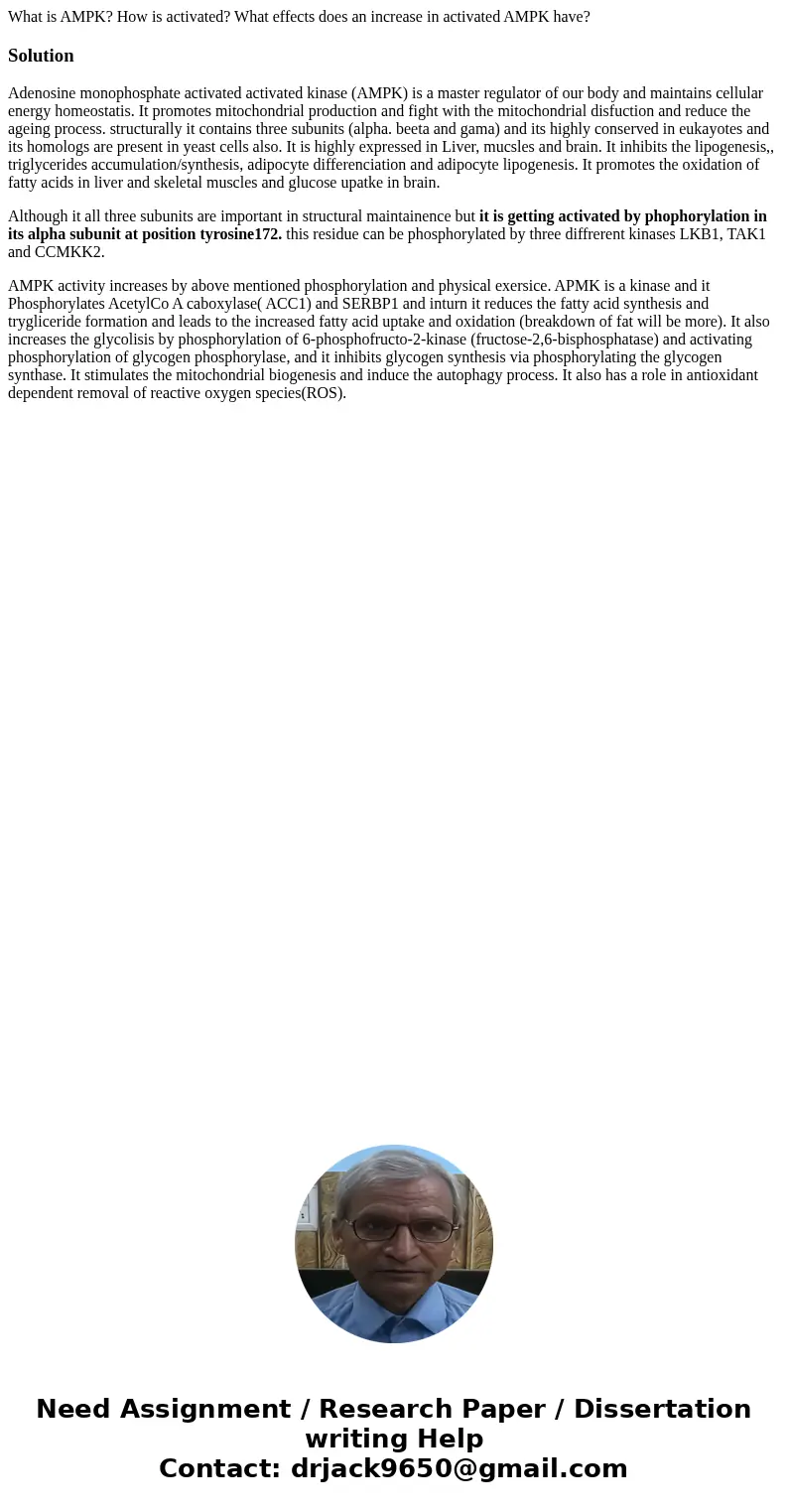What is AMPK How is activated What effects does an increase
What is AMPK? How is activated? What effects does an increase in activated AMPK have?
Solution
Adenosine monophosphate activated activated kinase (AMPK) is a master regulator of our body and maintains cellular energy homeostatis. It promotes mitochondrial production and fight with the mitochondrial disfuction and reduce the ageing process. structurally it contains three subunits (alpha. beeta and gama) and its highly conserved in eukayotes and its homologs are present in yeast cells also. It is highly expressed in Liver, mucsles and brain. It inhibits the lipogenesis,, triglycerides accumulation/synthesis, adipocyte differenciation and adipocyte lipogenesis. It promotes the oxidation of fatty acids in liver and skeletal muscles and glucose upatke in brain.
Although it all three subunits are important in structural maintainence but it is getting activated by phophorylation in its alpha subunit at position tyrosine172. this residue can be phosphorylated by three diffrerent kinases LKB1, TAK1 and CCMKK2.
AMPK activity increases by above mentioned phosphorylation and physical exersice. APMK is a kinase and it Phosphorylates AcetylCo A caboxylase( ACC1) and SERBP1 and inturn it reduces the fatty acid synthesis and trygliceride formation and leads to the increased fatty acid uptake and oxidation (breakdown of fat will be more). It also increases the glycolisis by phosphorylation of 6-phosphofructo-2-kinase (fructose-2,6-bisphosphatase) and activating phosphorylation of glycogen phosphorylase, and it inhibits glycogen synthesis via phosphorylating the glycogen synthase. It stimulates the mitochondrial biogenesis and induce the autophagy process. It also has a role in antioxidant dependent removal of reactive oxygen species(ROS).

 Homework Sourse
Homework Sourse